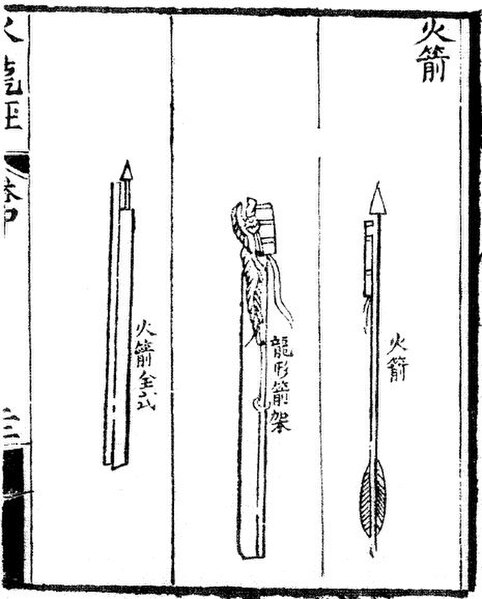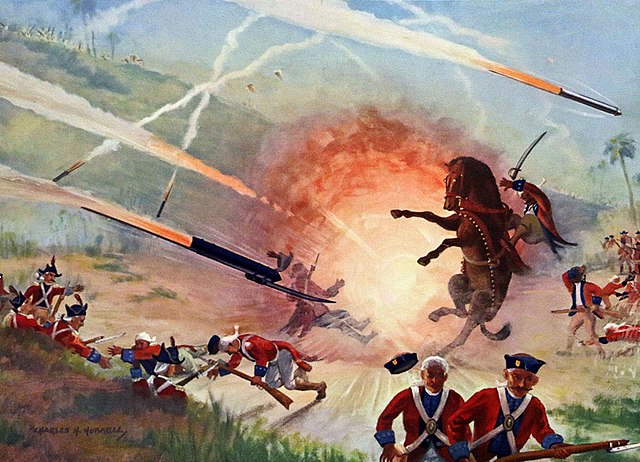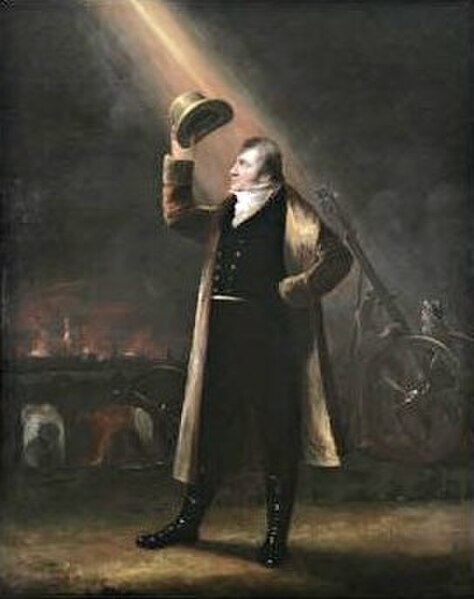Rocket propellant is the reaction mass of a rocket. This reaction mass is ejected at the highest achievable velocity from a rocket engine to produce thrust. The energy required can either come from the propellants themselves, as with a chemical rocket, or from an external source, as with ion engines.
A Delta IV Heavy during liftoff. The rocket is entirely fuelled with liquid hydrogen and liquid oxygen cryogenic propellants.
A rocket is a vehicle that uses jet propulsion to accelerate without using the surrounding air. A rocket engine produces thrust by reaction to exhaust expelled at high speed. Rocket engines work entirely from propellant carried within the vehicle; therefore a rocket can fly in the vacuum of space. Rockets work more efficiently in a vacuum and incur a loss of thrust due to the opposing pressure of the atmosphere.
A Soyuz-FG rocket launches from "Gagarin's Start" (Site 1/5), Baikonur Cosmodrome
Rocket arrows depicted in the Huolongjing: "fire arrow", "dragon-shaped arrow frame", and a "complete fire arrow"
Mysorean rockets and rocket artillery used to defeat an East India Company battalion during the Battle of Guntur
William Congreve at the bombardment of Copenhagen (1807) during the Napoleonic Wars





